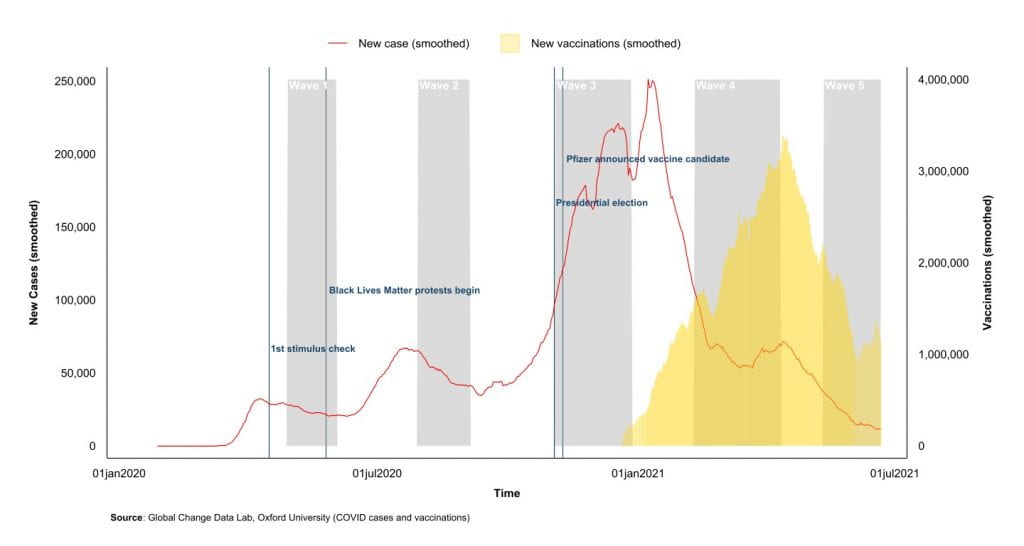Socioeconomic Impact of COVID-19 Survey: United States
Survey in the United States
United States Survey
A full description of the survey methodology is available here.

The Socioeconomic Impacts of COVID-19 Survey in the U.S. was designed to accomplish the following objectives:
- Measure the social and economic consequences of the COVID-19 pandemic;
- Assess how households are engaging with public- and employer-based programs that aim to mitigate the far-reaching impacts of COVID-19;
- Understand how the impacts of COVID-19 and the effects of COVID-19-associated policy responses differ based on key household characteristics such as race/ethnicity, geography, family status, and income.
The survey was administered with oversight from an advisory committee with representation and experts from the field. Wave 2 of the survey was translated and distributed in English and Spanish. The survey have been distributed to approximately 5,500 respondents from all 50 U.S. states during the following months:
- Wave 1: Late-April to mid-May
- Wave 2: Late-August to early-September
- Wave 3: November-December
- Wave 4: February to March, 2021
- Wave 5: Launched May 2021
The survey is internet-based and fielded through Qualtrics and includes 200 questions. Questions cover demographics, employment, gig employment, assets, debt, financial status, well-being, food security, housing and other hardships, health, COVID-19 symptoms, perspectives about the pandemic, social benefits during COVID-19, and education.

Topical Survey Briefs
On Sept. 15, 2021, SPI released briefs on the impact of COVID-19 on housing hardship, the importance of employment and associated benefits, such as the Paycheck Protection Program, family hardships, and efficiency of public benefits designed to support households in need, such as SNAP, TANF, and unemployment insurance benefits.